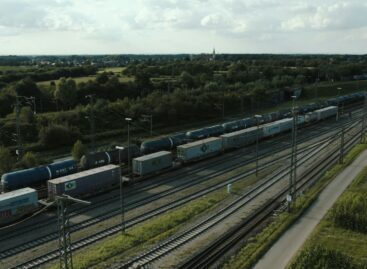New architectural laws and regulations would drive investors towards brownfield investments
The new architectural laws and regulations introduced since 2023 would drive investors towards brownfield investments, said the State Secretary for Architecture of the Ministry of Construction and Transport (ÉKM) in Szarvas, Békés County, on Wednesday.
 Regő Lánszki explained at the 11th stop of the ministry’s nationwide architectural forum that the proportion of green areas has been decreasing since the 1950s, with more than 20 percent of them being built over; while previously used industrial and factory buildings or MÁV areas in settlements have become “undeservedly underutilized” rust zones.
Regő Lánszki explained at the 11th stop of the ministry’s nationwide architectural forum that the proportion of green areas has been decreasing since the 1950s, with more than 20 percent of them being built over; while previously used industrial and factory buildings or MÁV areas in settlements have become “undeservedly underutilized” rust zones.
In addition, due to the emergence of new construction technologies and materials, uniformed, templated houses, alien to Hungarian architectural traditions, began to be built, which changed the cityscapes.
The main goal of the new architectural law and its implementing regulations is therefore to limit the development of green areas and to direct investors towards brownfield investments
– he added.
He emphasized that in addition to the national planning council, a system of local chief architects and planning councils was also established from January this year, which “also represents a new branch of power”, as they have a veto right. The state secretary noted that architectural plans must be approved by both the local chief architect and the local planning council, so local plans and interests must be met much more prominently, and design competitions have also become mandatory.
He explained that there are approximately 680 thousand vacant and 15 thousand 400 listed properties in Hungary, 70-80 percent of the latter “specifically require major renovation”, while these cost two to three times more than building new properties. He noted that between 1960 and 1990, 27 percent of listed buildings had to be removed from the register, “because there was nothing left to protect.”
Regő Lánszki noted that the construction industry accounts for 6 percent of GDP, and together with related services, it accounts for 13 percent in total, which is roughly the same size as tourism.
Related news
Transporters protested against the planned toll increase in Budapest and its surroundings
🎧 Hallgasd a cikket: Lejátszás Szünet Folytatás Leállítás Nyelv: Auto…
Read more >The Ministry of Transport invites transport organizations to the negotiating table
🎧 Hallgasd a cikket: Lejátszás Szünet Folytatás Leállítás Nyelv: Auto…
Read more >ÉKM: municipalities and employers can once again apply for the bicycle-friendly title
🎧 Hallgasd a cikket: Lejátszás Szünet Folytatás Leállítás Nyelv: Auto…
Read more >Related news
Christmas shock in commerce: for the first time, we can pay with bank cards in fewer places
🎧 Hallgasd a cikket: Lejátszás Szünet Folytatás Leállítás Nyelv: Auto…
Read more >Hungarian Confectionery Manufacturers Association: trends in 2025 and prospects for 2026
🎧 Hallgasd a cikket: Lejátszás Szünet Folytatás Leállítás Nyelv: Auto…
Read more >Most grocery chains will be open until noon on December 24th
🎧 Hallgasd a cikket: Lejátszás Szünet Folytatás Leállítás Nyelv: Auto…
Read more >






